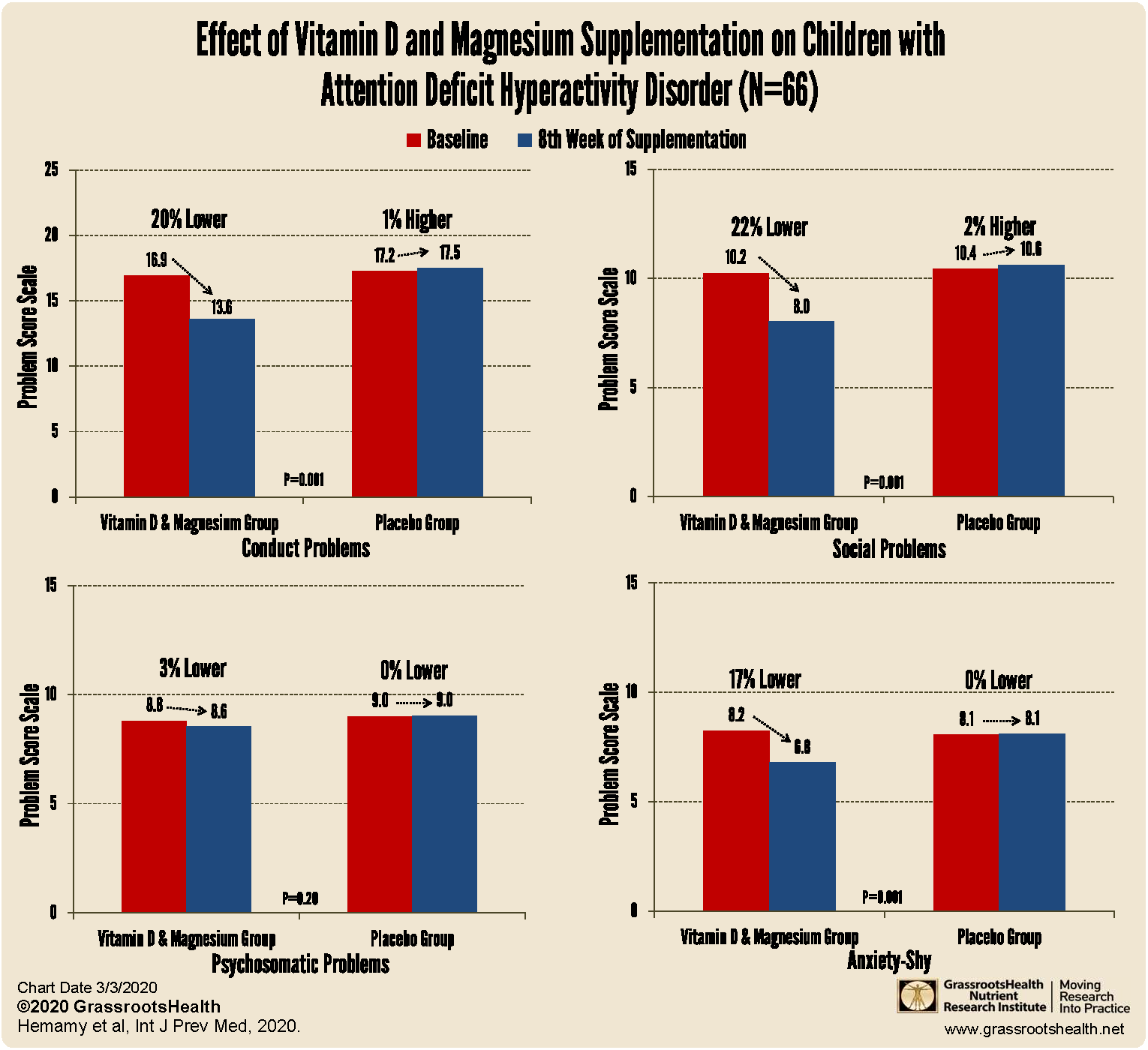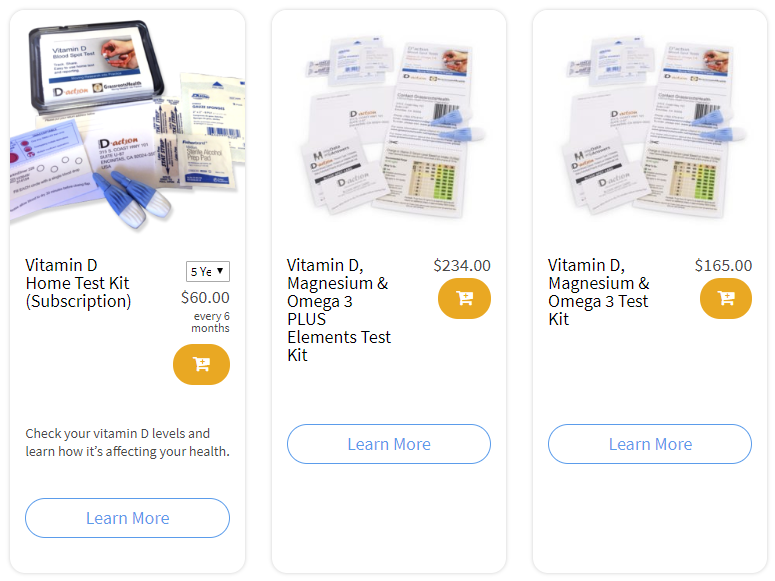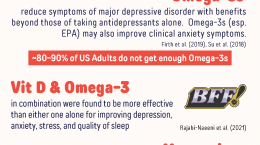Published on March 4, 2020
Attention Deficit Hyperactivity Disorder (ADHD) is now said to affect almost 1 out of every 10 children in the United States, according to the CDC. Its main symptoms include inattention, hyperactivity, and impulsivity. On top of that, 6 of every 10 children with ADHD were found to have at least one other mental, emotional, learning or behavioral disorder, such as anxiety, depression, and autism.
 Studies have found that children with ADHD tend to have lower levels of both vitamin D and magnesium than those without ADHD, and supplementation with magnesium, vitamin D, as well as omega-3 fatty acids, vitamin B6, and zinc have shown beneficial for these children.
Studies have found that children with ADHD tend to have lower levels of both vitamin D and magnesium than those without ADHD, and supplementation with magnesium, vitamin D, as well as omega-3 fatty acids, vitamin B6, and zinc have shown beneficial for these children.
A study published this year by Hemamy et al. outlined the results of a double-blind, randomized controlled trial that included 66 children ages 6-12 years old with a diagnosis of ADHD. All children enrolled had a starting vitamin D serum level under 30 ng/ml and were not taking any supplements with vitamin D. Half of the children (23 boys, 10 girls) were randomly selected for the supplement group, and the other half (23 boys, 10 girls) for the placebo group. Children in the supplement group received 50,000 IU vitamin D each week and 6 mg/kg/day of magnesium over the course of 8 weeks. Behavior problems including conduct problems, social problems, psychosomatic problems, and anxiety/shyness were assessed at both baseline and at the end of 8 weeks.
What did the study find?
Both the supplement and the placebo groups began the study with similar measurements for each of the behavior problems observed, as well as similar measurements for vitamin D and magnesium levels. At the end of the 8 weeks, both vitamin D and magnesium levels increased significantly in the supplement group, but not in the placebo group. Also observed in the supplement group compared to the placebo group were significant decreases in conduct problem scores, social problem scores, and anxiety/shy scores. There was no observed effect on psychosomatic problem scores for the supplementation group compared to the placebo group.
The findings of this study are another example of the importance of knowing and maintaining healthy nutrient levels in our children.
The Importance of Vitamin D Testing Increases as Our Children Grow
As children grown, and as they start to take on the responsibility of taking their own supplements, it is important to make sure their vitamin D intake is enough to accommodate their growth. We cannot know unless we test regularly! Test your children’s level today, and take steps to keep it within a target of 40-60 ng/ml or 100-150 nmol/L! Through GrassrootsHealth Nutrient Research Institute, you can also test your essential elements magnesium, copper, zinc and selenium, toxins such as lead, mercury and cadmium, as well as your omega-3 levels, inflammation levels and thyroid stimulating hormone (TSH) level. Log on to the test selection page (click the link below) to get your tests and see for yourself if your levels can be improved.
Make sure you track your results before and after, about every 6 months!
Click Here to Access the Test Page
How can I track my nutrient intake and levels over time?
To help you track your supplement use and nutrient levels, GrassrootsHealth has created the Personal Health Nutrient Decision System called
For each specific supplement, you can track what days you take it, how much, and many other details. This will help you know your true supplemental intake and what patterns of use work for you to reach and maintain optimum nutrient levels. Check it out today!









